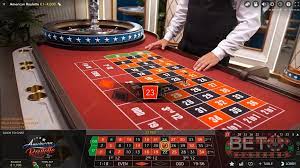Slot machines are one of the most iconic and widely recognized forms of gambling in the world, featured in casinos and online platforms globally. What began as a simple mechanical device has transformed into a sophisticated, engaging experience that attracts millions of players every year. In this article, we’ll explore the history, mechanics, psychology, and future of demo slot machines, offering a deep dive into why they remain so popular.
The Birth of the Slot Machine
The history of slot machines dates back to the late 19th century. The first mechanical slot machine, known as the “Liberty Bell,” was created by Charles Fey in 1895. Fey, a mechanic from San Francisco, invented the machine with three spinning reels and symbols such as horseshoes, diamonds, spades, and the now-iconic liberty bell. Players would pull a lever to set the reels in motion, and if the symbols aligned in a winning combination, they would be awarded coins.
This basic design remained relatively unchanged for decades, forming the foundation for the slot machines we know today. However, it wasn’t until the mid-20th century that the slot machine truly became a global phenomenon. With the rise of Las Vegas and the growth of legalized gambling, slot machines found a permanent place in casinos.
How Slot Machines Work
The basic principle behind slot machines has remained constant throughout their evolution, although the technology has advanced dramatically. Today’s slots are powered by complex random number generators (RNGs), which ensure that the outcome of each spin is entirely random. Let’s break down how they work:
- Reels and Symbols: Most modern slots feature a series of reels, typically three to five, with various symbols on them. These symbols can range from fruits and numbers to themed icons based on popular culture, mythology, or fantasy.
- Paylines and Payouts: Paylines are the lines on which a player must land matching symbols to win. In the past, these paylines were simple horizontal lines, but now they can be more complex, with diagonal, zig-zag, and even “cluster” formations. The more paylines a game has, the greater the number of potential winning combinations.
- Random Number Generator (RNG): The RNG is the heart of a slot machine’s fairness. Each time a player presses the “spin” button, the RNG generates a random sequence of numbers that determines the position of the reels. This guarantees that no two spins are alike and that each spin is independent of the last.
- Bonus Features: Modern slots are loaded with exciting bonus features that add layers of complexity and reward to the game. These may include free spins, multipliers, wild symbols, scatter symbols, and interactive mini-games. Such features not only increase the excitement but can also significantly boost the player’s chances of winning big.
The Psychology Behind Slot Machines
Slot machines are designed with psychology in mind to create an immersive experience that keeps players coming back. Some of the key psychological principles behind slots include:
- Near Misses: One of the most powerful psychological tools used by slot machines is the “near miss” effect. This occurs when a player almost hits a winning combination—perhaps two out of three matching symbols appear—creating a sense of “if only I had one more spin.” These near misses keep players engaged, as they are subconsciously encouraged to keep playing in the hopes of finally hitting the jackpot.
- The Illusion of Control: Many slot machines give the impression that the player can influence the outcome, such as by timing their spin or stopping the reels early. In reality, the RNG determines the result, but players may feel a sense of control over the process, which can make the experience more enjoyable.
- Variable Reinforcement: Slot machines employ a system of variable reinforcement, meaning that wins are unpredictable and irregular. This type of reinforcement leads to persistent play, as players continue to gamble in the hopes of receiving a reward, even when it’s not certain when the next win will occur.
- Sensory Stimulation: Slot machines are equipped with flashing lights, sounds, and sometimes even themed music, all designed to create an environment that is visually and aurally stimulating. This sensory overload is part of what makes slot machines so addictive and enjoyable, as the sensory feedback helps reinforce the excitement of the game.
The Rise of Online Slots
In recent years, online slots have become increasingly popular. Thanks to advancements in technology, slot games are now available on a variety of platforms, from desktop computers to mobile phones. The convenience of being able to play from anywhere has contributed to their widespread appeal.
Online slots also offer a wider range of themes and features than their land-based counterparts. Players can enjoy themes based on movies, TV shows, and even video games, making the experience more immersive. Furthermore, online casinos often feature progressive jackpots that can reach enormous amounts, giving players the chance to win life-changing sums of money.
The Future of Slot Machines
The future of slot machines is exciting, as technology continues to evolve. Virtual reality (VR) and augmented reality (AR) have the potential to take the slot experience to a new level, offering players the ability to step into fully immersive environments where they can interact with virtual slot machines and other players.
Additionally, advancements in artificial intelligence (AI) could lead to even more personalized experiences, where machines adapt to players’ preferences and provide tailored bonuses or rewards.
As gaming laws evolve worldwide, the rise of cryptocurrency and blockchain technology may also bring new ways to play slots with greater transparency and security. The possibility of decentralized gaming could revolutionize how slot machines are designed and played, offering a new wave of innovation.
Conclusion
Slot machines have come a long way since their humble beginnings in the 19th century, evolving from mechanical devices to highly sophisticated digital entertainment systems. Their enduring popularity can be attributed to their exciting gameplay, the allure of big jackpots, and the psychological principles that make them so engaging.
As technology continues to advance, the future of slots looks bright. Whether it’s the integration of VR, AR, or blockchain, one thing is certain—slot machines will remain a central part of the gambling landscape for years to come.

